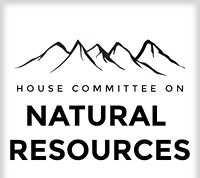Assistant Secretary Washburn Announces Two Initiatives to Provide Learning, Training Opportunities for Native Youth in Water Resource Management and Designing Energy Solutions
WASHINGTON, D.C. – As part of President Obama’s Generation Indigenous (“Gen-I”) initiative to remove barriers standing between Native youth and their opportunity to succeed, Assistant Secretary – Indian Affairs Kevin K. Washburn today announced two Indian Affairs initiatives offering learning and training opportunities to Native youth: the Native American Water Corps internships and the Energy Challenge for Native Youth.
“The Water Corps internships and Energy Challenge are two examples of how we are striving to meet President Obama’s commitment to Native youth and to supporting tribal nations,” Washburn said. “These programs provide secondary and post-secondary Native students with opportunities to stretch themselves academically, contribute to improving their communities, and test themselves and their ideas in real-world situations that will help them grow personally and professionally.”
Native American Water Corps Internships
Native American Water Corps internships are administered by the Bureau of Indian Affairs’ Branch of Water Resources through its Native American Water Corps Program, which is designed to increase the number of American Indians and Alaska Natives having water resource management expertise.
Through the Program’s Water Resource Technician Training Program, the Bureau of Indian Affairs responds to the management challenges faced by federally recognized tribes from increasing demands on limited water resources, ensuring basic sanitation and safeguarding drinking water quality, as well as protecting fisheries and maintaining critical stream and wetland habitat. The program is for Native American graduates at the secondary and post-secondary levels.
The curriculum is designed to expose students to water-based sciences, hydrology, water quality issues, and basic water management such as fisheries, watersheds, rangelands, irrigation systems, and dams.
Upon successful completion of their training students will be placed in four- to six-month paid internships with tribal governments and federal agencies to work on water-related issues pertinent to tribal resource needs.
For fiscal years 2014 and 2015 32 students completed the month-long comprehensive training program at the University of Arizona-Tucson. The summer 2015 program had 27 graduates who are now in internships around the country. The Bureau of Indian Affairs is currently seeking students for 45 training slots in fiscal year 2016.
Energy Challenge for Native Youth
The Energy Challenge for Native Youth is a program of the Indian Affairs’ Division of Energy and Mineral Development. Its purpose is to encourage American Indian and Alaska Native high school students to see how they can make a difference in their communities by utilizing science, technology, engineering, and math through a creative hands-on, problem-solving and engineering process.
The primary goal of the Energy Challenge for Native Youth is for students to identify real-world energy-related problems that affect them or their communities and then develop creative solutions to address them. All high school-level tribal youth are invited to participate.
In July, the Division of Energy and Mineral Development signed a contract with the American Indian Science and Engineering Society to implement and execute the 2015-2016 Energy Challenge: a two-phased science fair.
The fall 2015 semester focus was on research and design, with the top projects teams being awarded funding to build representations of their projects during the spring 2016 semester. The fall semester deadline was October 23, 2015, with submitted projects being judged on:
• Student communication of the energy problem and solution;
• Measurability and demonstrability of the energy solution;
• Comprehensive and concise budget and implementation plan; and
• Solution creativity
Once the top projects are selected, students will receive travel scholarships to attend the 2015 National Conference of the American Indian Science and Engineering Society which takes place November 19-21 in Phoenix, Ariz. There the project teams will receive $2,000 to build and implement their projects or demonstration prototypes and develop written narratives and/or
visual presentations to explain them. These projects will be judged on:
• Successful construction and implementation;
• Solution data-gathering and analysis; and
• Presentation of results
The winning project team from the spring 2016 phase will travel to Washington, D.C., to present its final design and results to Assistant Secretary Washburn.
In December 2014, President Obama launched Generation Indigenous to help improve the lives of Native youth and cultivate the next generation of Native leaders. With a substantial proportion of the American Indian and Alaska Native population under 24 years old – 42 percent compared to 34 percent of the total population — and a large bubble in the 15-19 age group in particular,1 the administration has an opportunity to help create a brighter future for Native youth.
The Assistant Secretary – Indian Affairs oversees the Office of Indian Energy and Economic Development, which implements the Indian Energy Resource Development Program under Title V of the Energy Policy Act of 2005. The Office’s mission is to foster stronger American Indian and Alaska Native communities by helping federally recognized tribes develop their renewable and nonrenewable energy and mineral resources; increasing access to capital for tribal and individual American Indian- and Alaska Native-owned businesses; assisting tribes in building the legal infrastructure necessary for their economic progress; and enabling American Indianand Alaska Native-owned businesses to take advantage of government and private sector procurement opportunities.
For more information about Indian Energy and Economic Development programs and services, visit the Indian Affairs website at http://www.indianaffairs.gov/WhoWeAre/ASIA/IEED/index.htm.
The Assistant Secretary – Indian Affairs also oversees the Bureau of Indian Affairs which is headed by a director who is responsible for managing day-to-day operations through four offices:
Indian Services, Justice Services, Trust Services, and Field Operations. These offices directly administer or fund tribally based infrastructure, law enforcement, social services (including child welfare), tribal governance, natural and energy resources, and trust lands and resources management programs for the nation’s federally recognized American Indian and Alaska Native tribes and villages through 12 regional offices and 81 agencies. The BIA Office of Trust Services Division of Water and Power’s Branch of Water Resources administers the Native American Water Corps Program.
For more information on the BIA Branch of Water Resources, visit
http://www.bia.gov/WhoWeAre/BIA/OTS/NaturalResources/Water/index.htm.
####
1 2010 U.S. Census: http://factfinder2.census.gov/faces/tableservices/jsf/pages/productview.xhtml?src=bkmk
CONTACT: Nedra Darling
November 5, 2015 202-219-4152















